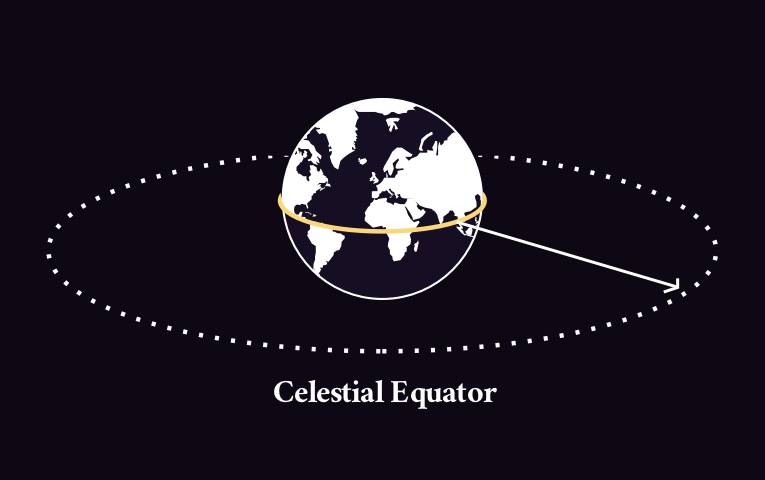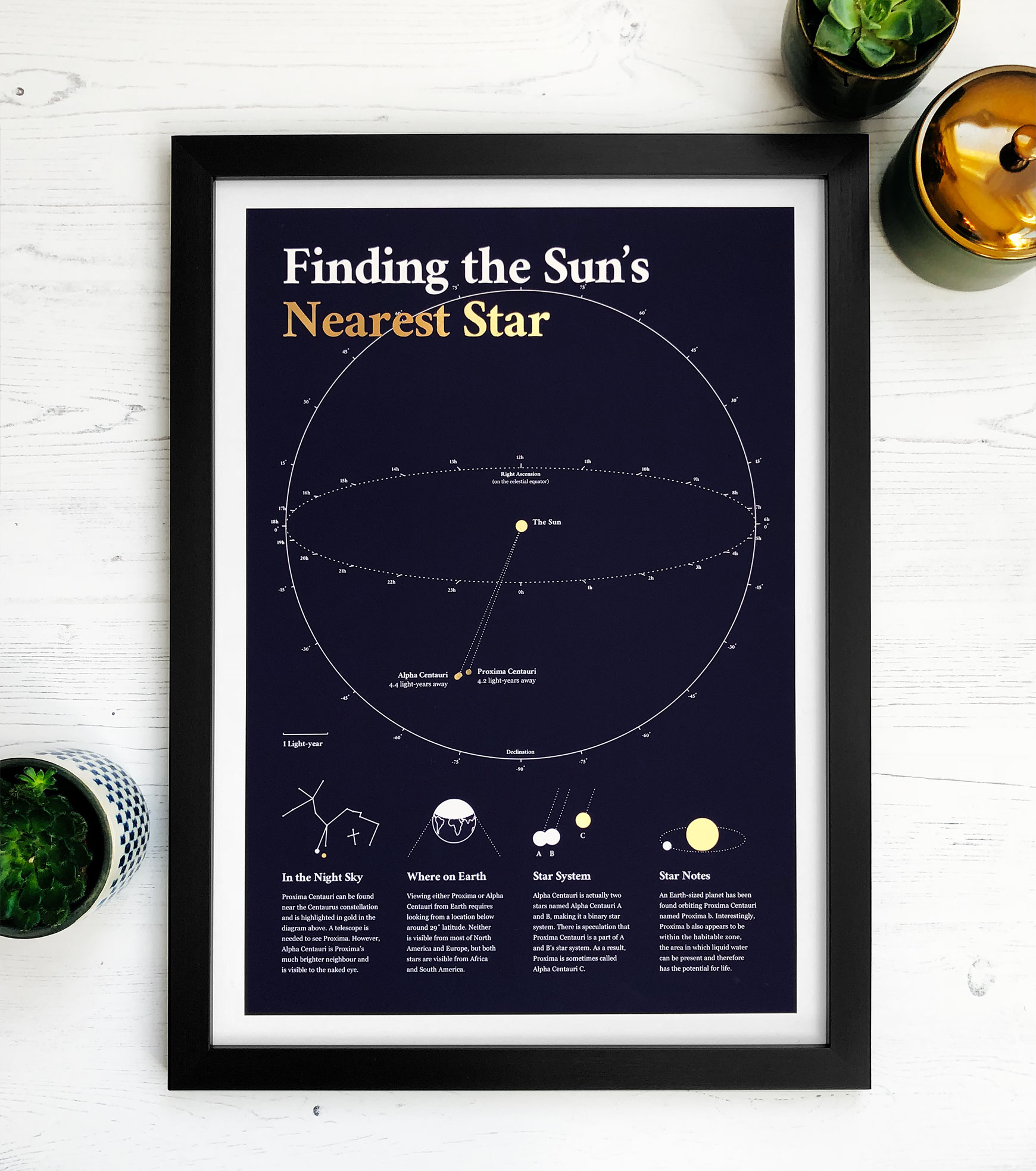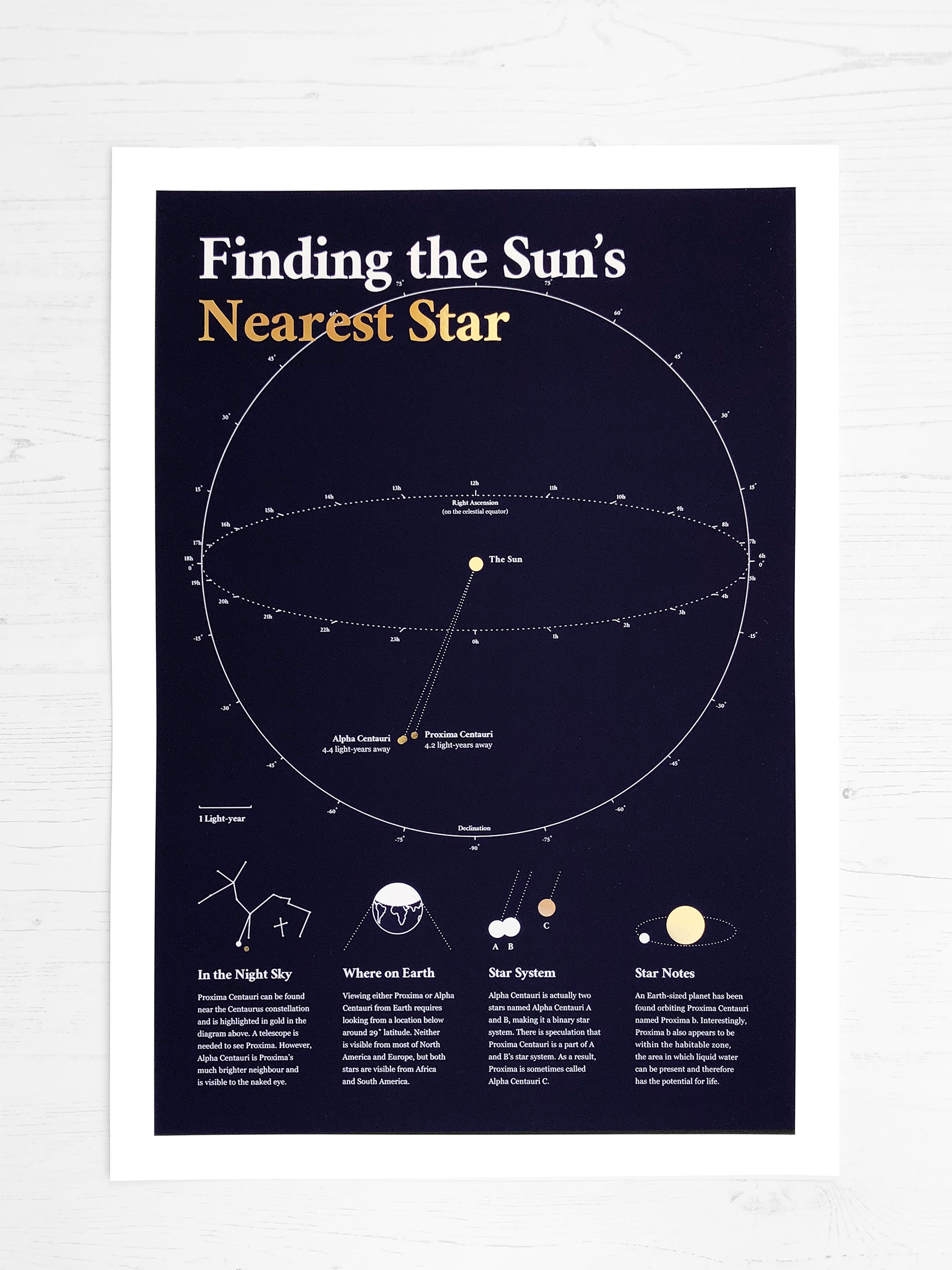The Sun's Nearest Star
Below is a map of the nearest stars to Earth in our galaxy followed by a few points of explanation including a list of the stars featured in the map. You can also buy this map as a print for inspiration at home or work.

Map Explained

Where is Earth?
Earth isn't visible in the diagram above because the scale is too large to show 1 Astronomical Unit (the distance between Earth and the Sun). There are 63,241.1 AU’s in 1 light-year which means that the Earth is actually hidden well within the yellow circle used to symbolise the Sun.

Orientation
To understand this diagram, try to imagine you are looking towards the Sun from a great distance (beyond 12 light-years). The stars surrounding the Sun have been plotted using their angular position from the celestial equator which is actually the Earth’s Equator projected onto the night’s sky.

Scale
The measurements in the scale above are for distances parallel to the declination plane. However the featured stars are not exactly on this plane, and as a result, distances appear shortened.

Star System
Alpha Centauri is actually two stars named Alpha Centauri A and B, making it a binary star system. There is speculation that Proxima Centauri is a part of A and B’s star system. As a result, Proxima is sometimes called Alpha Centauri C.

Planets
An Earth-sized planet has been found orbiting Proxima Centauri named Proxima b. Interestingly, Proxima b also appears to be within the habitable zone, the area in which liquid water can be present and therefore has the potential for life.

In The Night Sky
Proxima Centauri can be found near the Centaurus constellation and is highlighted in gold in the diagram above. A telescope is needed to see Proxima. However, Alpha Centauri is Proxima’s much brighter neighbour and is visible to the naked eye.

Where on Earth
Viewing either Proxima or Alpha Centauri from Earth requires looking from a location below around 29˚ latitude. Neither is visible from most of North America and Europe, but both stars are visible from Africa and South America.
Star List
1. The Sun
0.00001581 light-years away (or 1AU)
2. Proxima Centauri
4.2 light-years away
3. Alpha Centauri
4.4 light-years away


